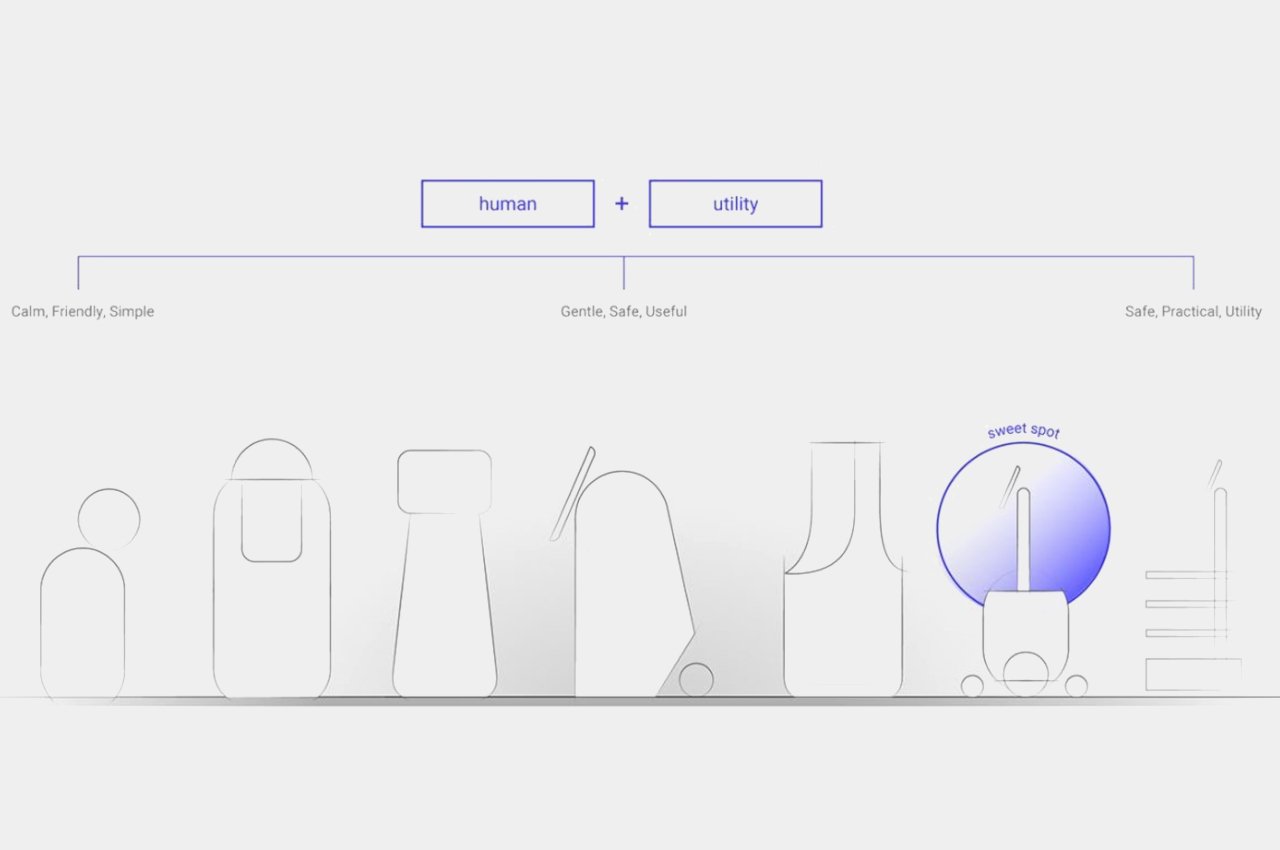Microsoft On AI: Redefining Human-Computer Interaction And Design

Table of Contents
Enhanced Accessibility through Microsoft AI
Microsoft's commitment to inclusivity is clearly demonstrated through its investment in AI-driven assistive technologies. These tools are breaking down barriers and creating more equitable access to technology for people with disabilities.
AI-Powered Assistive Technologies
Microsoft's dedication to accessibility is evident in its range of AI-powered tools. Seeing AI, Narrator, and other innovative applications leverage the power of artificial intelligence to significantly improve the user experience for individuals with various disabilities.
- Improved screen reader capabilities with natural language processing: Narrator, for example, uses advanced NLP to provide more accurate and natural-sounding text-to-speech, making information more accessible.
- AI-powered image recognition to describe scenes and objects for visually impaired users: Seeing AI uses computer vision to analyze images and provide detailed descriptions, allowing visually impaired users to better understand their surroundings.
- Predictive text and personalized learning for users with motor impairments: AI algorithms learn user typing patterns, offering predictive text suggestions and adaptive interfaces to ease input challenges for those with motor difficulties. This improves efficiency and reduces frustration.
Personalized User Experiences
Beyond assistive technologies, Microsoft AI enables dynamic adaptation to individual user needs and preferences, crafting truly personalized experiences. The AI learns user patterns and anticipates needs, proactively tailoring the user interface for optimal usability.
- Context-aware suggestions and recommendations: AI anticipates user needs based on context, offering relevant suggestions and recommendations at the right moment.
- Adaptive learning curves for software applications: Applications adapt their difficulty and complexity based on the user's skill level, providing a smoother learning experience.
- Personalized settings and interface customizations: Users can customize their settings and interface to match their individual preferences, leading to a more comfortable and productive workflow. This personalized approach greatly enhances user satisfaction.
Revolutionizing Design Processes with Microsoft AI
Microsoft is not only enhancing user experience but also revolutionizing the design process itself through the integration of AI into its design software. This integration streamlines workflows and unlocks new creative possibilities.
AI-Driven Design Tools
Microsoft is actively integrating AI into its design software to automate tasks and amplify creativity. This results in more efficient and innovative design outcomes.
- Faster prototyping and iteration cycles: AI-powered tools automate repetitive tasks, allowing designers to focus on creative problem-solving and rapid prototyping.
- Improved design consistency and quality: AI can ensure design consistency across different platforms and applications, maintaining a unified brand experience.
- Exploration of novel design possibilities: AI can suggest novel design solutions and help designers explore uncharted creative territory. This leads to more innovative and engaging user interfaces.
Data-Driven Design Decisions
Microsoft leverages the power of data analytics to inform design choices, leading to more effective and user-friendly interfaces. This data-driven approach ensures designs are aligned with actual user behavior and preferences.
- Identifying usability issues and areas for improvement: Analyzing user data helps pinpoint areas where the design falls short, allowing for targeted improvements.
- Optimizing interface elements for better user engagement: Data provides insights into which interface elements are most effective, guiding optimization efforts for improved user engagement.
- Predicting future trends and user needs: By analyzing data, Microsoft can anticipate future trends and user needs, enabling proactive design adjustments and ensuring the software remains relevant.
The Future of Human-Computer Interaction with Microsoft AI
Microsoft's vision extends beyond current capabilities, pushing the boundaries of HCI with a focus on natural language interfaces and immersive, multimodal interactions.
Natural Language Interfaces
AI-powered chatbots and virtual assistants are transforming how users interact with software. Microsoft's Cortana and other natural language interfaces are becoming increasingly sophisticated, creating more intuitive and accessible user experiences.
- Seamless integration with various applications and services: Natural language interfaces enable users to interact with multiple applications and services through a single, unified interface.
- Intuitive and conversational interaction styles: Users can interact with software in a natural, conversational manner, rather than through complex commands or menus.
- Increased accessibility for non-technical users: Natural language interfaces remove the technical barriers to entry, making technology more accessible to a wider audience.
Immersive and Multimodal Interactions
Microsoft is investing heavily in immersive technologies and multimodal interactions, creating richer and more engaging user experiences.
- Augmented and virtual reality applications: Microsoft is developing AR and VR applications that blend the digital and physical worlds, creating immersive experiences for users.
- Holographic computing and mixed reality experiences: Microsoft is pushing the boundaries of HCI with holographic computing and mixed reality, creating new possibilities for interaction and collaboration.
- More intuitive and engaging interactions: Multimodal interactions, incorporating voice, gesture, and other input modalities, create more intuitive and engaging user experiences.
Conclusion
Microsoft's commitment to AI is fundamentally reshaping human-computer interaction and design. By leveraging AI's capabilities, Microsoft is creating more accessible, personalized, and engaging experiences for users worldwide. From AI-powered assistive technologies to innovative design tools and immersive experiences, Microsoft is at the forefront of this exciting evolution. To learn more about how Microsoft is using AI to improve human-computer interaction and design, explore their latest research and initiatives. Embrace the future of computing by understanding the impact of Microsoft AI Human-Computer Interaction and its potential to transform the digital world.

Featured Posts
-
 Find Macon Countys Newest Building Permits
Apr 26, 2025
Find Macon Countys Newest Building Permits
Apr 26, 2025 -
 Wwii Sunken Warship Yields Unexpected Discovery A Car Found Intact
Apr 26, 2025
Wwii Sunken Warship Yields Unexpected Discovery A Car Found Intact
Apr 26, 2025 -
 Construction Of Worlds Tallest Abandoned Skyscraper To Resume After A Decade
Apr 26, 2025
Construction Of Worlds Tallest Abandoned Skyscraper To Resume After A Decade
Apr 26, 2025 -
 Dave Portnoy Unleashes On Gavin Newsom The Full Story
Apr 26, 2025
Dave Portnoy Unleashes On Gavin Newsom The Full Story
Apr 26, 2025 -
 Hollywood Nepotism Debate Amanda Seyfrieds Unfiltered Response
Apr 26, 2025
Hollywood Nepotism Debate Amanda Seyfrieds Unfiltered Response
Apr 26, 2025
Latest Posts
-
 The Karen Read Case A Chronological Overview Of The Trials
Apr 26, 2025
The Karen Read Case A Chronological Overview Of The Trials
Apr 26, 2025 -
 Karen Read A Year By Year Account Of Her Legal Battles
Apr 26, 2025
Karen Read A Year By Year Account Of Her Legal Battles
Apr 26, 2025 -
 A Timeline Of Karen Reads Murder Trials And Convictions
Apr 26, 2025
A Timeline Of Karen Reads Murder Trials And Convictions
Apr 26, 2025 -
 Resumption Of Construction Worlds Tallest Abandoned Skyscraper Project
Apr 26, 2025
Resumption Of Construction Worlds Tallest Abandoned Skyscraper Project
Apr 26, 2025 -
 Construction To Restart On Worlds Tallest Abandoned Skyscraper
Apr 26, 2025
Construction To Restart On Worlds Tallest Abandoned Skyscraper
Apr 26, 2025
